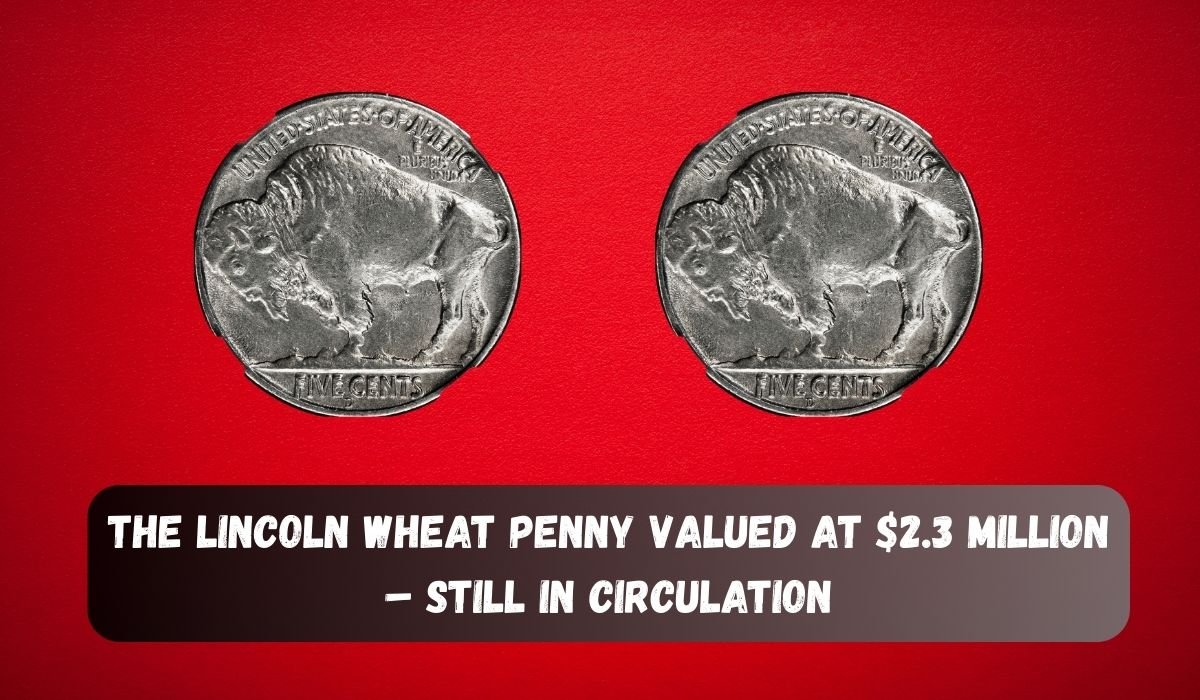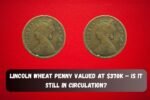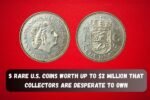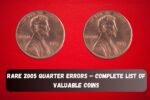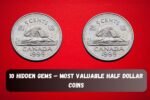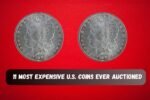Have you ever checked your pocket change and thought, “What if one of these coins is worth a fortune?” Well, believe it or not, that might not be just a wild dream. There’s a Lincoln Wheat Penny out there that’s been valued at an unbelievable $2.3 million—and yes, it might still be in circulation!
What’s So Special About the Lincoln Wheat Penny?
First off, the Lincoln Wheat Penny is no ordinary coin. It was first minted in 1909 and continued until 1958. These pennies are easily recognized by the two wheat stalks on the back, which give them their nickname. They’re classic, vintage, and many people collect them today.
But the one that’s causing all the buzz? That’s a 1943 Lincoln Wheat Penny—but made of copper, not steel.
Why Is the 1943 Copper Penny So Valuable?
Here’s where things get interesting.
During World War II, the U.S. Mint needed copper for ammunition and other war supplies. So, in 1943, they decided to make pennies out of steel coated with zinc. These coins look silver, not the usual brownish-red copper.
But somehow, a few copper planchets—the blank discs used to make pennies—were left in the machines. As a result, a very small number of 1943 pennies were accidentally made with copper instead of steel.
That mistake? It turned a plain old penny into a multi-million dollar treasure.
Still Out There: A Penny Worth Millions?
Here’s the craziest part: some of these rare pennies might still be out there, hiding in old jars, coin rolls, or even in someone’s pocket.
Only a handful have been found. Some are in private collections. But experts believe there could still be a few lost in circulation.
So yes, you could have one in your change right now and not even know it.
How to Spot a 1943 Copper Penny
Now you’re probably thinking, “Okay, how do I find one?” Good question!
Here’s what to look for:
- Date: The year should be 1943.
- Color: Real copper pennies are brown or reddish, not shiny silver like steel ones.
- Magnet Test: This is an easy trick. Steel pennies will stick to a magnet. Copper ones won’t.
- Weight: Copper pennies weigh a little more than steel ones. If you have a small scale, it should weigh around 3.11 grams.
If you think you’ve found one, don’t clean it or try to polish it. That could ruin its value. Instead, take it to a coin expert or collector for a proper check.
The $2.3 Million Story
In 2010, one of these rare 1943 copper Lincoln Wheat Pennies sold for a mind-blowing $1.7 million. Since then, other examples have been valued even higher. That’s where the $2.3 million number comes from—an estimated value based on recent private sales and collector demand.
The older and better the condition, the higher the price. So if you find one that’s shiny and clean (called “mint condition”), you might just be holding a winning lottery ticket.
A Coin Collector’s Dream
If this story has sparked your interest in coins, you’re not alone. Many people start collecting coins just for fun, and then it turns into a serious hobby—or even a career.
Who knows? You might not only find a rare penny but also fall in love with coin hunting. It’s like a real-life treasure hunt you can do right from home.
Conclusion
The idea that a tiny penny could be worth $2.3 million is exciting, right? It proves that hidden treasures are still out there, maybe even in your own wallet. So next time you get some change, don’t just toss it in a jar—check the dates and take a closer look. The Lincoln Wheat Penny might be your unexpected golden ticket.
FAQs
Can I find a 1943 copper penny in my spare change?
Yes, it’s rare but possible! Always check your coins—especially old ones.
How do I know if my 1943 penny is made of copper or steel?
Try a magnet. If it sticks, it’s steel. If not, it might be copper.
Where can I get my penny checked?
You can visit a coin dealer, a collector’s shop, or even send it to a coin grading service.
Are all 1943 pennies valuable?
No. Only the copper ones are super rare. The steel ones are common and not worth much.
Is it legal to sell a rare penny like that?
Yes, totally legal. If you own it, it’s yours to keep or sell.
